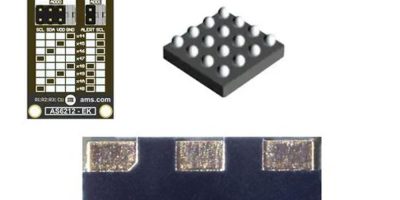Analog Devices (ADI) and Marvell Technology have collaborated to deliver a 5G massive MIMO (mMIMO) radio reference design which will be showcased at MWC 2023. It combines digital beamforming and transceiver silicon with support for Open RAN (O-RAN).
The collaboration combines ADI’s latest RadioVerse transceiver SoC and the Marvell Octeon 10 Fusion 5G baseband processor. The latter is claimed to be the industry’s first 5nm digital beamforming solution for 5G. The reference design has been created to improve the time to market for advanced mMIMO radio units and O-RAN support with up to 40per cent lower energy consumption, smaller size and lower weight. The Octeon 10 Fusion baseband processor also provides flexible L1 implementation, with hardware and software reuse across the radio unit and distributed unit to facilitate evolving L1 splits among operators worldwide over the coming years. The RadioVerse SoC provides extensive digital RF front end capabilities including field proven digital pre-distortion (DPD).
“As mMIMO radio functionality grows in complexity, more specialised silicon approaches are required,” said Alex Jinsung Choi, chairman of the O-RAN Alliance. He said that reference designs such as this one can help catalyse the O-RAN market for 5G mMIMO radio units “by enabling advanced configurations that meet network operators’ high expectations for power efficiency and performance.”
Together, the RadioVerse transceiver SoC and the Octeon 10 Fusion processor support the entire signal chain with unmatched radio unit system efficiency, said Analog Devices. The ADRV9040 RadioVerse transceiver SoC includes linearisation algorithms for boosting power amplifier efficiency and performance, as well as digital channel filters which reduce interface rates. The Octeon 10 Fusion 5G baseband processor has specialised accelerators optimised for processing complex beamforming algorithms, along with dedicated processors for the low PHY baseband which can be configured for the various O-RAN split 7.2x configurations.
“Infrastructure vendors face many challenges when developing O-RAN mMIMO radio units, including access to optimised semiconductors,” said Joe Barry, vice president of marketing, systems & technology in the communication and cloud business unit at ADI. He said the platform “makes industry-leading technology available to both established and emerging vendors”.
Will Chu, senior vice president, processors business group at Marvell, said that the combination “provides OEMs a 5G open radio unit reference design that scales the capabilities and performance of next-generation mMIMO beamforming at the lowest possible power”.
The reference design is expandable to support a 64T64R configuration. It supports 32 transmit and receive antennas (32T32R) with 400MHz of operational bandwidth and 300MHz of instantaneous bandwidth. The Octeon 10 Fusion 5G baseband processor and RadioVerse SoC leverage hardware accelerators as well as the 16nm RF and 5nm digital baseband process nodes shipping commercially, delivering up to 40 per cent reduction in energy consumption per bit compared with the previous generation. The platform enables network energy savings (NES) modes, for additional power savings.
The platform is on display at MWC 2023 (27 February to 02 March), at ADI’s booth (Hall 2-2B18) and Marvell’s booth (Hall 2-2F34).






